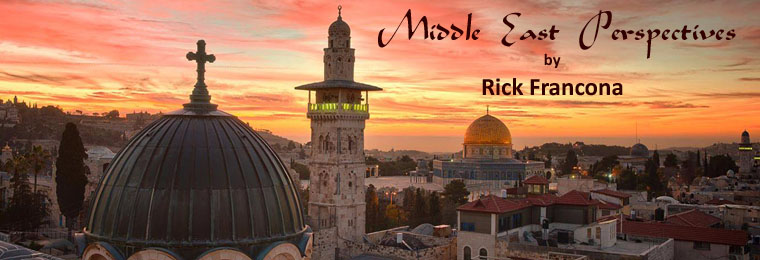The August 21 chemical attacks that the U.S. government has ascribed to the Syrian armed forces killed over 1400 people, including over 400 children. President Obama is contemplating military action against the Syrian regime of Bashar al-Asad in response to what he terms as a "violation of well established international norms against the use of chemical weapons...."
There has been a great amount of coverage of the results of the chemical warfare attacks - mostly based on videos posted on social media sites, but also hair, soil and blood tests that indicate the use of sarin gas, a nerve agent also known as GB. The videos show the agony caused by nerve agents, and hundreds of dead bodies. The rows of dead children wrapped in burial shrouds were difficult to watch.
What has gotten lost in the coverage is an answer to the basic question: Why did the Syrians use chemical weapons in the suburbs of Damascus? Let's look at the map (above - click for larger view).
The green line is a highway called the "Southern Beltway" - it is the de facto dividing line between the Syrian army to the west and the opposition forces to the east. The opposition forces in this area, called the East Ghutah, consist mostly of units who self-identify as part of the Free Syrian Army.
I have placed a red dot to the east of the highway in the government-controlled area. That is the location of al-'Abasiyin Square (although it is a circle). The conventional wisdom among military analysts is that if the opposition can break though the line and reach al-'Abasiyin Square, they may well be able to push into the heart of the city and take it.
To that end, there is ferocious fighting in the suburbs of Jawbar and al-Qabun as the rebels make forays to the west of the highway. There is almost constant fighting on the Southern Beltway itself as the army tries to retain control of the road, losing quite a few of its T-72 tanks (mostly of the 4th Armored Division and Republican Guard) to the opposition's antitank missiles.
If the Syrian regime was concerned that they might not be able to hold the line represented by the Southern Beltway, or if they wanted to send a message to the residents of the suburbs located to the east of the road perceived as supporting the opposition, they may have resorted to the use of chemical weapons.
'Ayn Tarma and Zamalka are two of these suburbs. The two areas have come under heavy artillery and air attacks for the last two years, but those attacks have not had the desired effect. The suburbs are directly opposite al-'Abasiyin Square. There are reports from other suburbs in the East Ghutah based on the presence of victims at medical facilities. However, soon after the attacks, the medical services of the FSA mobilized clinics and medical personnel in the neighboring suburbs to handle the mass casualty event.
Conventional weapons kill with blast effect and shrapnel, but are concentrated and do not cover wide areas, probably not as widespread as a suburb. Chemical agents in gas form, however, can.
Although the numbers - approximately 1400 dead - pale in comparison to the estimated 120,000 dead in the civil war thus far, killing that many people in two concentrated areas in one attack is effective. Not only does it clear an area of concern, it sends a psychological message to the remaining residents.
Recent reporting also indicates there were also attacks in the southern suburbs of Mu'adhamiyah and Daraya. In this case, the regime is protecting what they consider a strategic resource - al-Mazzah air base. I have annotated the base with a red dot as well.
These were not random attacks - someone chose these targets.
______________
Personal anecdote: Al-'Abasiyin Square is really a large traffic circle. My wife was in a minor traffic accident when a dump truck forced the car she was driving into the barrier that surrounds the center of the traffic circle.
The police arrived, took a statement from my wife and the driver of the truck. The police then sent the truck driver on his way and provided my wife with an accident report, citing the cause of the accident as the "will of Allah."
Try filing a claim with your insurance company with that police report.


.jpg)

